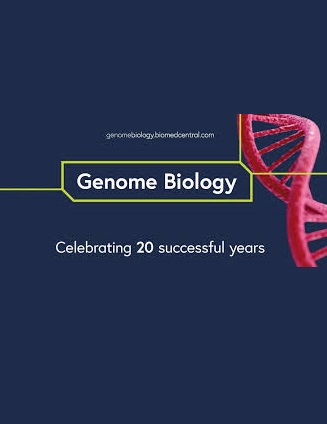Gut microbiota contributes to high-altitude hypoxia acclimatization of human populations
IF 10.1
1区 生物学
Q1 BIOTECHNOLOGY & APPLIED MICROBIOLOGY
引用次数: 0
Abstract
The relationship between human gut microbiota and high-altitude hypoxia acclimatization remains highly controversial. This stems primarily from uncertainties regarding both the potential temporal changes in the microbiota under such conditions and the existence of any dominant or core bacteria that may assist in host acclimatization. To address these issues, and to control for variables commonly present in previous studies which significantly impact the results obtained, namely genetic background, ethnicity, lifestyle, and diet, we conducted a 108-day longitudinal study on the same cohort comprising 45 healthy Han adults who traveled from lowland Chongqing, 243 masl, to high-altitude plateau Lhasa, Xizang, 3658 masl, and back. Using shotgun metagenomic profiling, we study temporal changes in gut microbiota composition at different timepoints. The results show a significant reduction in the species and functional diversity of the gut microbiota, along with a marked increase in functional redundancy. These changes are primarily driven by the overgrowth of Blautia A, a genus that is also abundant in six independent Han cohorts with long-term duration in lower hypoxia environment in Shigatse, Xizang, at 4700 masl. Further animal experiments indicate that Blautia A-fed mice exhibit enhanced intestinal health and a better acclimatization phenotype to sustained hypoxic stress. Our study underscores the importance of Blautia A species in the gut microbiota’s rapid response to high-altitude hypoxia and its potential role in maintaining intestinal health and aiding host adaptation to extreme environments, likely via anti-inflammation and intestinal barrier protection.肠道微生物群有助于人类适应高海拔缺氧环境
人类肠道微生物群与高海拔缺氧适应之间的关系仍然存在很大争议。这主要是由于在这种条件下微生物群可能发生的时间性变化以及是否存在可能帮助宿主适应环境的优势菌或核心菌还存在不确定性。为了解决这些问题,并控制以往研究中常见的对结果有重大影响的变量,即遗传背景、种族、生活方式和饮食,我们对同一队列中的 45 名健康汉族成年人进行了 108 天的纵向研究,他们从海拔 243 米的低地重庆前往海拔 3658 米的高海拔高原拉萨、西藏和返回。我们利用霰弹枪元基因组剖析技术研究了不同时间点肠道微生物群组成的时间变化。结果显示,肠道微生物群的物种和功能多样性显著减少,功能冗余明显增加。这些变化主要是由 Blautia A 过度生长引起的,在西藏日喀则海拔 4700 米的低氧环境中长期生活的六个独立汉族队列中,Blautia A 的数量也很丰富。进一步的动物实验表明,饲喂 Blautia A 的小鼠在持续的缺氧压力下表现出更强的肠道健康和更好的适应表型。我们的研究强调了 Blautia A 物种在肠道微生物群对高海拔缺氧的快速反应中的重要性,以及它在维持肠道健康和帮助宿主适应极端环境中的潜在作用,这可能是通过抗炎和肠道屏障保护实现的。
本文章由计算机程序翻译,如有差异,请以英文原文为准。
求助全文
约1分钟内获得全文
求助全文
来源期刊

Genome Biology
Biochemistry, Genetics and Molecular Biology-Genetics
CiteScore
21.00
自引率
3.30%
发文量
241
审稿时长
2 months
期刊介绍:
Genome Biology stands as a premier platform for exceptional research across all domains of biology and biomedicine, explored through a genomic and post-genomic lens.
With an impressive impact factor of 12.3 (2022),* the journal secures its position as the 3rd-ranked research journal in the Genetics and Heredity category and the 2nd-ranked research journal in the Biotechnology and Applied Microbiology category by Thomson Reuters. Notably, Genome Biology holds the distinction of being the highest-ranked open-access journal in this category.
Our dedicated team of highly trained in-house Editors collaborates closely with our esteemed Editorial Board of international experts, ensuring the journal remains on the forefront of scientific advances and community standards. Regular engagement with researchers at conferences and institute visits underscores our commitment to staying abreast of the latest developments in the field.
 求助内容:
求助内容: 应助结果提醒方式:
应助结果提醒方式:


